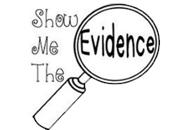December 07, 2015
We quickly learn that studying history by studying wars is an unsatisfying methodology. Wars are important because of the way they change people, not just geography. So, on the anniversary of America's entry into World War II, we choose to write about a person.
Frank Sinatra, whose birthday is this coming Saturday, sang songs during World War II. On Sunday morning, December 7, 1941, he was just on the verge of turning 26, which was the average age of an American solider in that war. Sinatra did not fight, having been rejected as 4F, physically unfit. The reasons why are unimportant.
During the war and during the peace which followed, Sinatra's voice belonged to that generation. It was young, intense and carefree when 20 year-olds, who couldn't get the keys to the family car, flew four-engine B-24 bombers over Europe; it was hip, cool and swinging when they returned, building families in the suburban wasteland. Au courant for these boy soldiers was whatever Sinatra wore; whatever Sinatra sang; whatever Sinatra drank. For a 25 year-old tank jockey who fought with Patton at The Bulge, living in a split level in Valley Stream was that much better when he could sit down in front of the TV with a glass of Jack Daniel's, Sinatra's favorite. It meant that he was alive, living the good life and, just like Sinatra, drinking "the nectar of the gods."
If we kids don't understand why Sinatra is such an icon, it's because he's not

ours. We didn't fight a war together. He didn't sing to our girlfriends while we were just trying to get off the beach alive on Okinawa. But, he did sing to our fathers and mothers, in years that were filled with joy and promise. Good years, that, if nothing else, built us.
On Saturday, sit back with a glass of Jack and a bit of Sinatra's music. Close your eyes. It will never be that good again. And Frank? Don't worry. He was buried with a flask of Jack Daniel's. Salut! Cent' anni!
Nancy Roman slipped and fell on an oily substance on a subway platform. The Transit Authority successfully moved in Supreme Court for summary judgment, alleging that it didn't create the condition, nor did it have actual or constructive notice of its existence. Easy.
Not so easy, says the Second Department in Roman v. New York City Transit Authority, 2015 NY Slip Op 08820 (2d Dep't 12/2/15). Merely saying it doesn't make it so. In order to meet its burden on a motion for summary relief, a defendant making those claims must present evidence of prima facie entitle- ment to judgment as a matter of law. That means evidence (with respect to lack of constructive notice) "'as to when the area in question was last cleaned or inspected relative to the time when the plaintiff fell'." The TA didn't do that here and presented